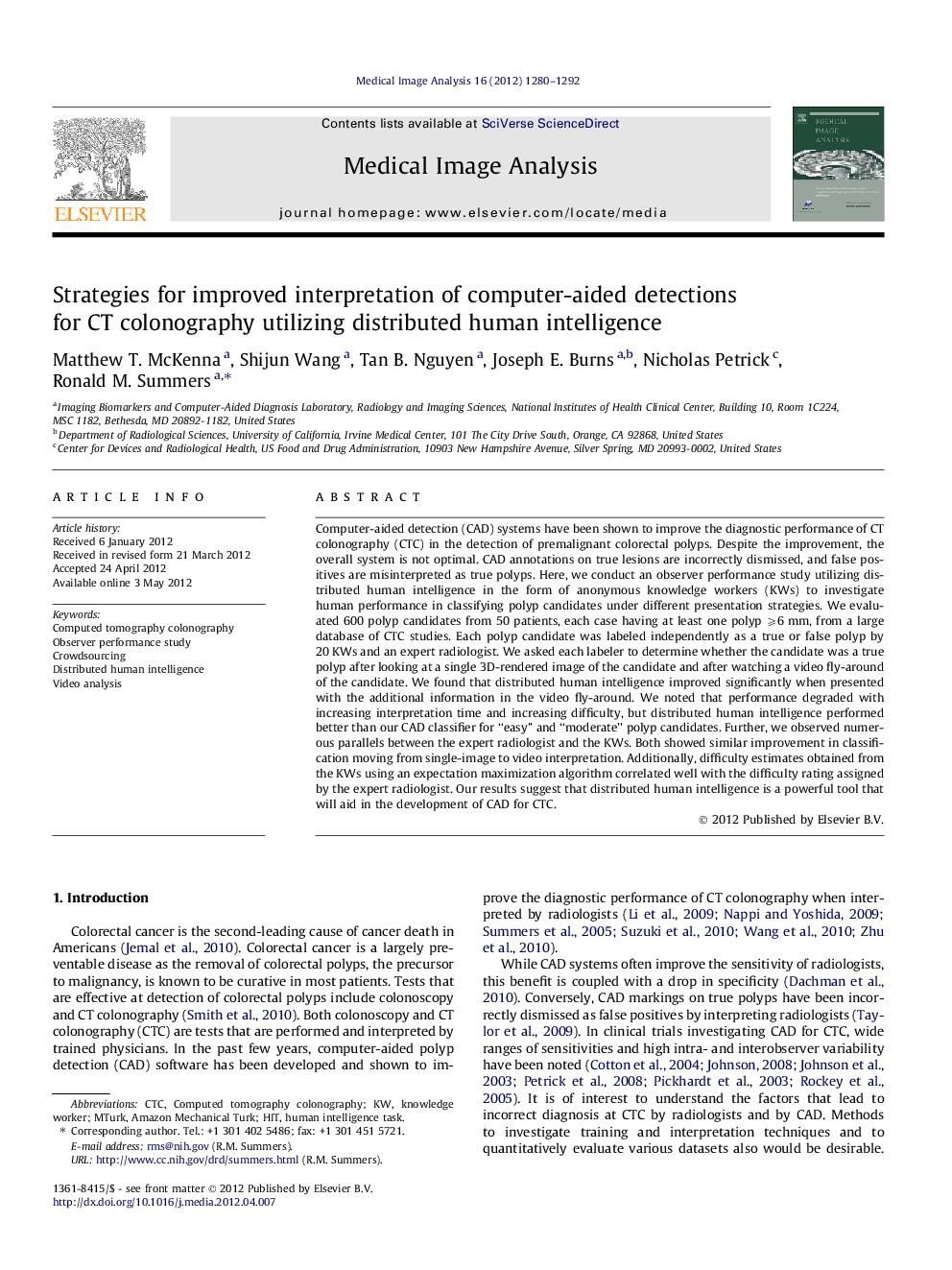| کد مقاله | کد نشریه | سال انتشار | مقاله انگلیسی | نسخه تمام متن |
|---|---|---|---|---|
| 444086 | 692879 | 2012 | 13 صفحه PDF | دانلود رایگان |

Computer-aided detection (CAD) systems have been shown to improve the diagnostic performance of CT colonography (CTC) in the detection of premalignant colorectal polyps. Despite the improvement, the overall system is not optimal. CAD annotations on true lesions are incorrectly dismissed, and false positives are misinterpreted as true polyps. Here, we conduct an observer performance study utilizing distributed human intelligence in the form of anonymous knowledge workers (KWs) to investigate human performance in classifying polyp candidates under different presentation strategies. We evaluated 600 polyp candidates from 50 patients, each case having at least one polyp ⩾6 mm, from a large database of CTC studies. Each polyp candidate was labeled independently as a true or false polyp by 20 KWs and an expert radiologist. We asked each labeler to determine whether the candidate was a true polyp after looking at a single 3D-rendered image of the candidate and after watching a video fly-around of the candidate. We found that distributed human intelligence improved significantly when presented with the additional information in the video fly-around. We noted that performance degraded with increasing interpretation time and increasing difficulty, but distributed human intelligence performed better than our CAD classifier for “easy” and “moderate” polyp candidates. Further, we observed numerous parallels between the expert radiologist and the KWs. Both showed similar improvement in classification moving from single-image to video interpretation. Additionally, difficulty estimates obtained from the KWs using an expectation maximization algorithm correlated well with the difficulty rating assigned by the expert radiologist. Our results suggest that distributed human intelligence is a powerful tool that will aid in the development of CAD for CTC.
Figure optionsDownload high-quality image (191 K)Download as PowerPoint slideHighlights
► Changes to CTC CAD interpretation are assessed using distributed human intelligence.
► Knowledge workers (KWs) outperformed SVMs for certain categories of CAD.
► KWs’ performance compared favorably to that of an expert radiologist.
► Difficulty estimates from KW scores closely matched expert-assigned difficulty.
► Changes in KW performance mimicked published results on expert observer performance.
Journal: Medical Image Analysis - Volume 16, Issue 6, August 2012, Pages 1280–1292